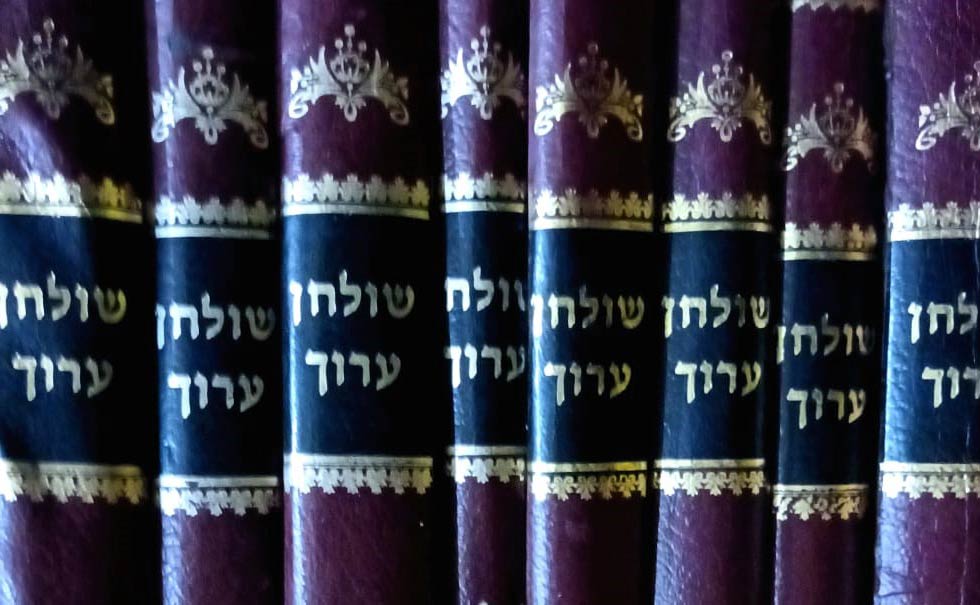Parshat Shoftim
Our Parsha begins with the requirement to establish judges and a system of laws:
More than any other element of our Torah, which also contains poetry, metaphysics, proverbs, national history and the biographies and moralistic teachings of some of our greatest leaders, is primarily a book of Laws. A discussion with anyone interested in Judaism, whether that be an individual involved in learning to keep Shabbat, Kosher (dietary regulations), prayer, or the laws of the sanctity of marriage, quickly reveals that two vital elements are interwoven: the philosophical message that drives the actual Mitzvah in question and gives it context and meaning as well as the practical Halachic (legal) requirements needed to achieve it.
Jewish history reveals all too often that a focus on the metaphysical and philosophical nature of a Mitzvah alone does not lead to its performance. Normally the exact opposite – an overt focus on the minutiae of the laws without such a context – creates a Judaism that can feel void of meaning for many and ultimately can lead to the same effect.
It is very fitting that this Shabbat is also the anniversary[1] of the completion of the first section of the famous codex of Jewish Law: the Shulchan Aruch[2] by Rabbi Yosef Caro[3] which was completed in the Kabbalistic city of Safed Land of Israel, following its publication and printing[4] it has become possibly the widely consulted, and most accepted book of Halachic Jewish Law ever written:
Although the Rabbi Karo (referred to as the Mekhaber) ruled according to the Sephardic tradition and custom, the Shulchan Aruch also contains Glosses by the Rema[5] that include the Ashkenazic custom thus making it a truly universal work studied in Yeshivot and communities across the globe. Rabbi Karo based his work on the rulings of 3 major Rishonim[6] ; the Rif[7], the Rosh[8] and the Rambam[9], aside to the publication of his own Shulchan Aurech he also published commentaries on the Tur[10] (Arba’ah Turim) a commentary written by the Rosh (widely considered the “Shulchan Aurech” of his time) as well as the Rambam’s codex the Mishnah Torah[11].
In modern times a phenomenon of “cultural Judaism” has sprouted, it claims that Judaism has its in own innate culture and that the experience of this may be separate from Judaism’s religious and legal framework. However, I would strongly argue that Judaism exists of multiple cultures and characteristics dependent on where the sect, family or movement was founded, where they travelled to and what driving motivations are present within the subgroup in question.
It is precisely this element in which the Shulchan Aurech remains supreme; Jews may be from different parts of the world entirely, having adopted different languages, dress, cuisine and developed specific customs and yet still may live their lives according to the generally accepted codes of Halachic Jewish Law. Indeed, where we see communities that depart from this, they lack a defining principle that prevents them from secularisation, intermarriage and ultimately extinction:
We have had the great privilege of visiting communities in Europe, India, Africa, America and parts of Asia – despite the variances between Ashkenazim and Sephardim and whether their ethos was more modern or traditional, one central factor was discernible: where communities had become comfortable in departing from the “Daled Amot”[12] of the Shulchan Aureh they had begun to fade or faded entirely into a kind of “Halachic non-existence”, ultimately since we use the Shulchan Aurech to define for us “what is a Jew”, “what is Shabbat observance”, “what is permitted and forbidden” – to step beyond these borders begins a kind of slide into the abyss that rarely has a end in sight. Ultimately the power of Rabbi Karo’s work is that it was accepted so widely, by so many different communities across the globe, when communities and movements change these legal standards, although they may grow and develop in size in terms of congregations, they begin to differ from accepted communities across the globe ultimately creating individuals who’s legal status within the people is not accepted for marriage or burial by all communities particularly in the state of Israel.
In Judaism our moral and spiritual aspirations are underscored by application to our fidelity to law and custom as the context where such aspirations take hold, grow and blossom:
As the renowned Rabbi Akiva Tatz is fond of teaching: “Judaism does not promote a system of rights and liberties as in some democracies, but rather a system of obligations and responsibilities”, our desire to connect to Hashem as the Creator of our world and our individual lives, to grow within the Torah and understanding of our people can only come from a position of being bound together with the Halachic legal framework that unites all Israel together under the banner of a shared destiny and mutual acceptance of our responsibilities to Hashem:
Despite the popular saying that “there are many opinions within Judaism”, a statement used traditionally to divest oneself of the Divine responsibility entrusted to us, there is actually consensus on the vast majority of the laws in the Torah agreed upon by those who have undertaken to keep and guard its sanctity aside from some slight variance in customs and culturalisms, there is a place for every individual within the framework of our national legal system.
Rabbi Jonathan Goldschmidt 2023 ©
[1] 2nd of Ellul in 1555
[2] Literally translated as “The Set Table”
[3] Rabbi Yosef Karo (1488-1575) – Born in Toledo was a noted Talmudist, Halachic and Kabbalastic scholar who eventually settled in Safed, Israel. He was eventually considered the leader of his generation and was given the title מָרַן, māran, ‘our master’.
[4] In 1563 – published in Venice 1565
[5] Rabbi Moshe Isserles – a major Dayan (Judge) and religious leader in Poland – 1530-1572
[6] A term used to define the leading rabbis and poskim who lived approximately during the 11th to 15th centuries, arguably it has come to mean those born before the publication of the Shul Aruch itself.
[7] Rabbi Isaac Alfasi – born in “Qalaat Hammad” (scholars are in disagreement but it is understood that this location was in what is now modern day Algeria or alternatively Fez), he became a renowned teacher and founded a Yeshiva in Fez known for his work Sefer HaHalachot which is considered one of the first and fundamental works of Halacha one of his most prominent students was Rabbi Yeduah HaLevi author of the Kuzari – 1013-1103
[8] Rabbi Asher Ben Jehiel – also referred to as Rabbenu Asher, was probably born in Cologne and died in Toledo, his best known work “Piskei Ha-Rosh” (decisions of the Rosh) is part of the regular Study of Talmud in most Yeshivot worldwide and deals exclusively with the final practical Halacha and omits areas pertaining to the Land of Israel and Midrashic (metaphorical) elements of the Talmud – this work has been printed with almost every edition of the Talmud since its publication, he also left behind a very popular work of Mussar (ethics) “Orchot Chaim”. His son Rabbi Yakov ben Asher (popularly called the Tur) was also a great Rabbi – 1250-1327
[9] Moshe Ben Maimon, Born in Córdoba within the Almoravid Empire (present-day Spain), was a prominent rabbi, physician (personal Dr to al-Qadi al-Fadil – Sultan of Egypt), and philosopher in both Morocco and Egypt, also known as Maimonides he wrote extensively also writing a codex of Jewish Law called the Mishnah Torah as well a codex of Jewish Philosophy known in English as the “Guide to the Perplexed”.
[10] The commentary is called the “Beit Yosef”, published 1550-1559
[11] The commentary is called the “Kesef Mishnah”, published 1574-1575 aside from being a read along commentary it also was used to defend the Rambam’s work against the criticisms of the Ra’Vaad (Rabbi Abraham Ben David) – both the Kesef Mishnah and the writings of the Ra’Vaad are typically printed alongside the main text of the Mishnah Torah.
[12] The “four cubits” of law that we live within.




